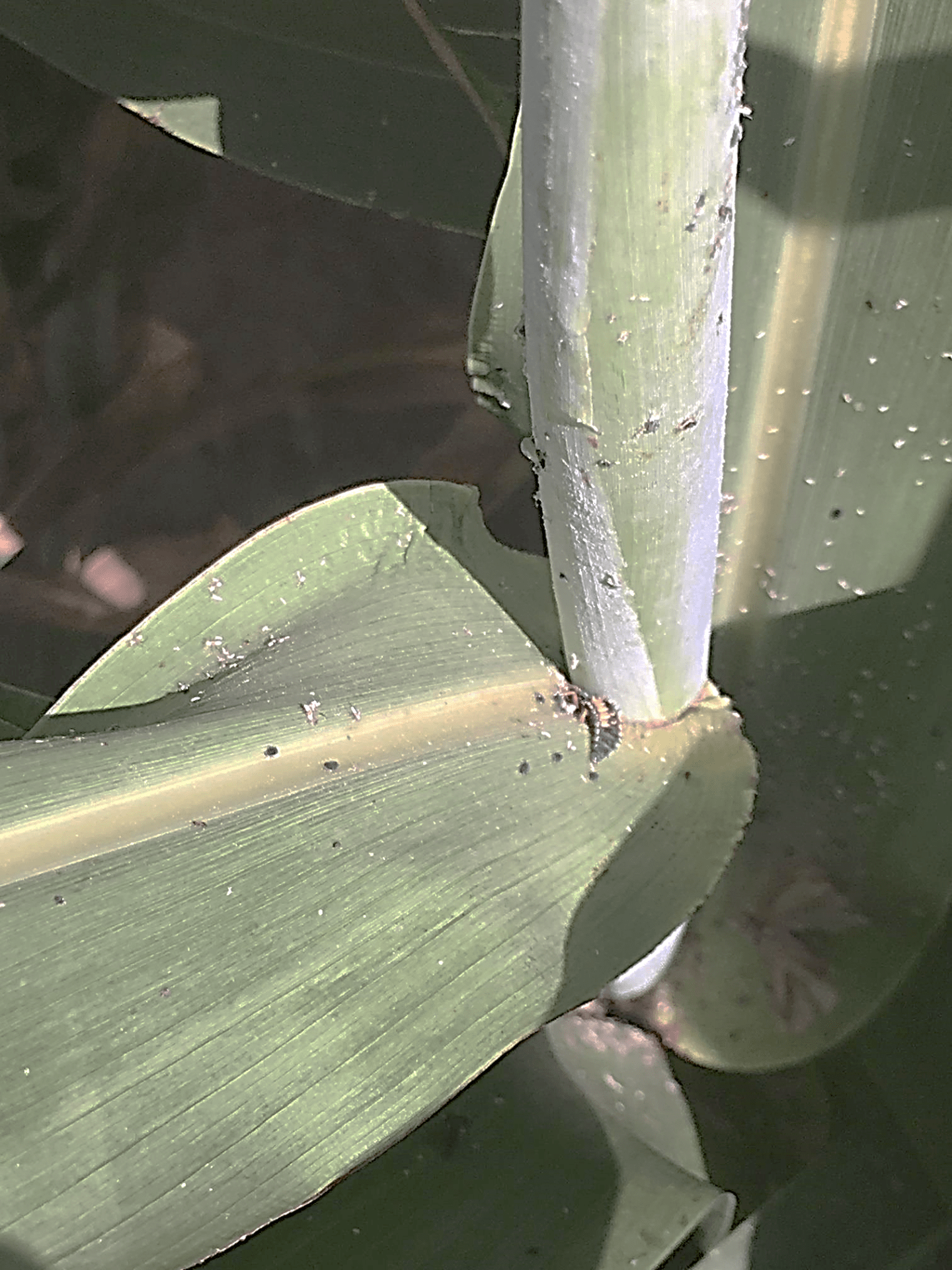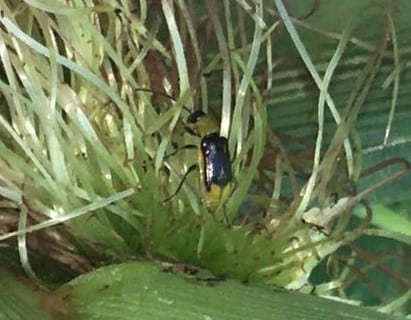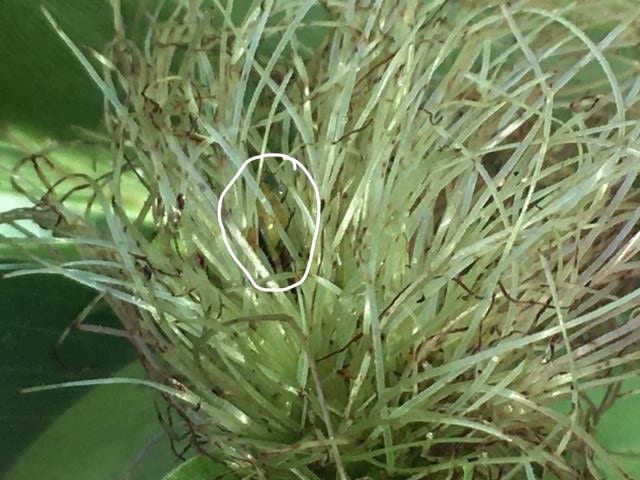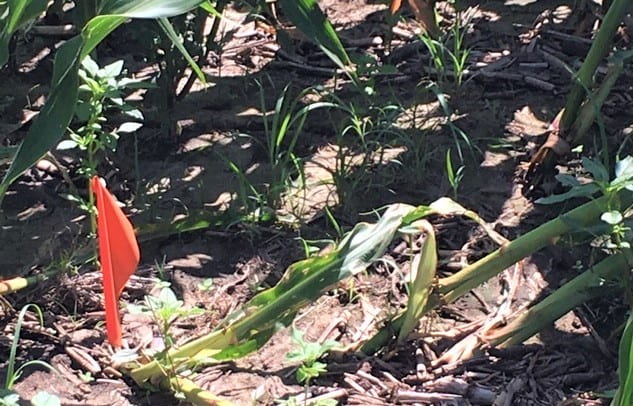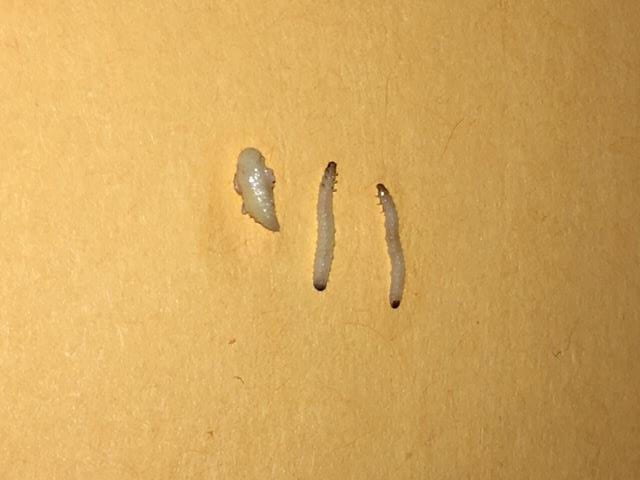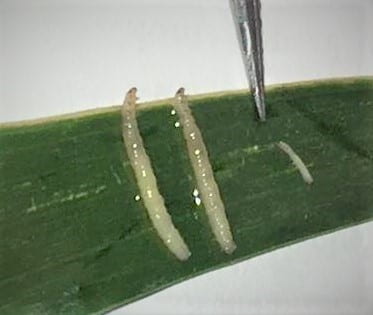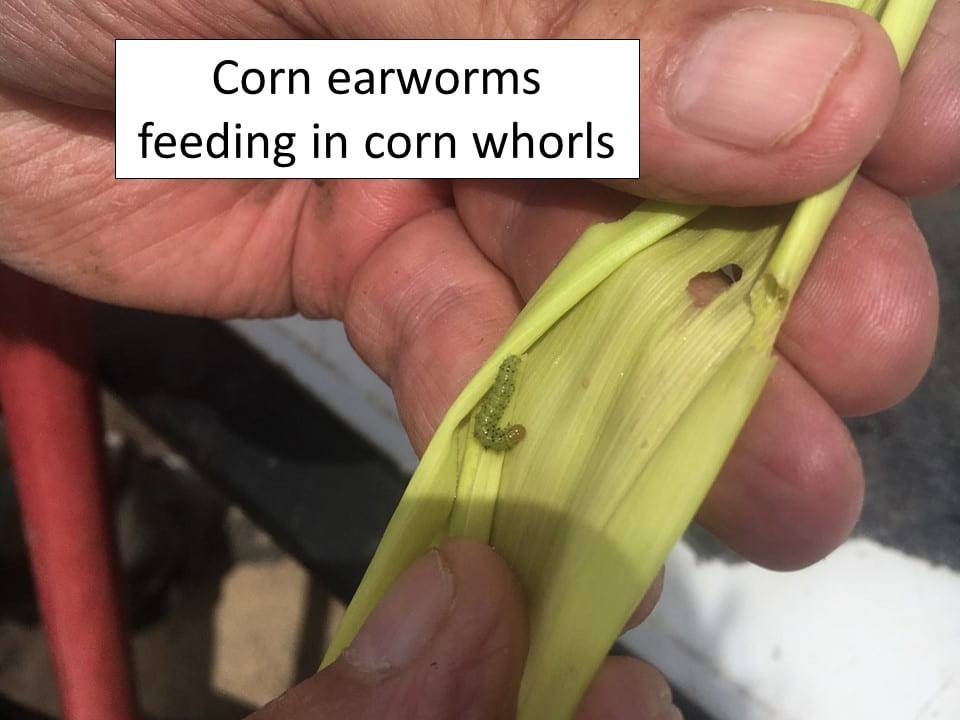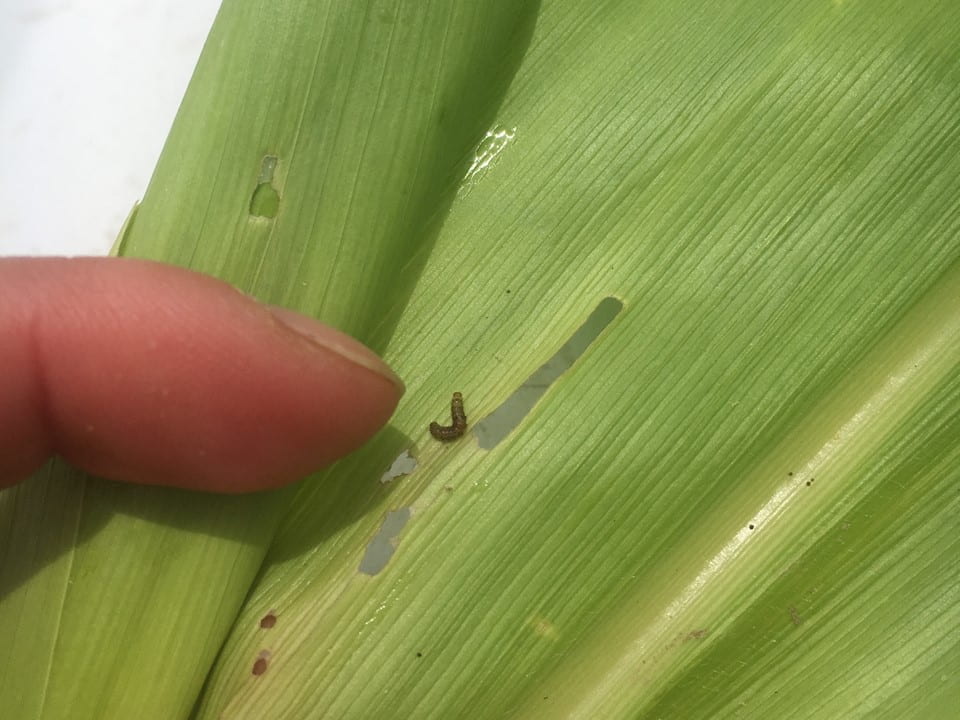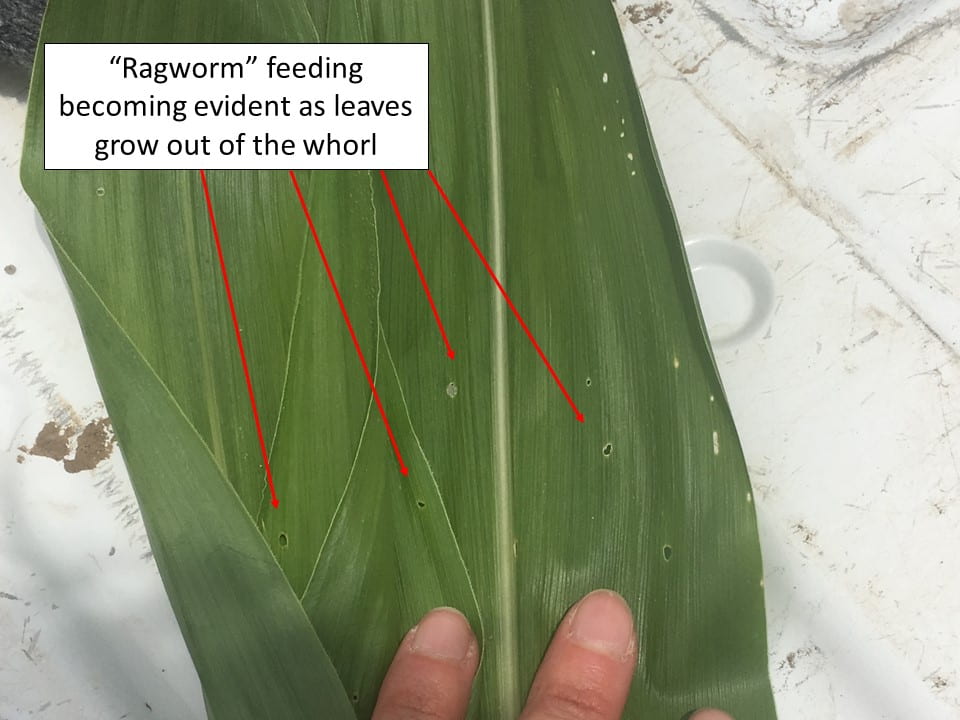–Dr. Jeff Whitworth
Corn leaf aphids feed on corn and/or sorghum and are usually most evident during the whorl stage of sorghum. This year seems to be a very good year for corn leaf aphids as we have received many inquiries relative to possible damage caused by corn leaf aphids. Corn leaf aphids can be found every year. However, I could find no data to show that corn leaf aphids ever occur in field-wide populations that would justify an insecticide application and as farther indication of this, there is no treatment threshold. Corn leaf aphids are usually just considered as a great host for beneficials to utilize to sustain their populations. Figure 2 is a corn leaf aphid being fed upon by a lady beetle larva. Sorghum, and soybeans, have been relatively pest free compared to past years, at least so far this year.
Figure 2. Lady beetle larva feeding on aphids (picture by Cody Wyckoff)
